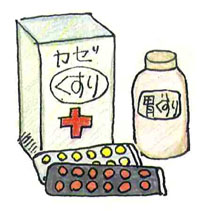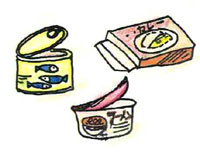- Yokohama-shi Top Page
- Health, Medical and Welfare
- Health and Medical Care
- institute for health
- Pharmaceutical Affairs Information
- What is health food?
- Definitions of pharmaceuticals, foods, health foods, etc.
Here's the text.
Definitions of pharmaceuticals, foods, health foods, etc.
Last Updated April 1, 2023

Drugs are used to treat human diseases, are directly related to life and health. Therefore, in order to prevent health damage caused by its use, the purpose of ensuring the quality, efficacy and safety of pharmaceuticals is to ensure the quality, efficacy, and safety of pharmaceuticals. Law on Ensuring Safety (Pharmaceutical Machinery Law) "is stipulated.
"This law ensures the quality, efficacy and safety of pharmaceuticals, quasi-drugs, cosmetics, medical devices, and regenerative medicine products (hereinafter referred to as “pharmaceuticals, etc.”), and promotes the research and development of products such as pharmaceuticals, medical devices, and regenerative medicine, etc., which are particularly necessary for medical care, in addition to taking necessary measures to improve the health and hygiene. " (Article 1 of the Pharmaceutical Machinery Act)
In this law, pharmaceuticals are defined as follows:
1.What is contained in the Japanese Pharmacopoeia
2.Machines (machine, dental materials, medical supplies, hygiene products, and programs (directions to computers) that are intended to be used to diagnose, treat or prevent human or animal diseases, and that are combined so that one result can be obtained. The same shall apply hereinafter. ) And the recording medium that records it. The same applies hereinafter. ) Not applicable (excluding quasi-drugs and regenerative medicine products)
3.Items that are intended to affect the structure or function of a person or animal and that are not machinery and equipment (excluding products such as quasi-drugs, cosmetics, and regenerative medicine) (Article 2, Paragraph 1 of the Pharmaceutical Machinery Act)

The food taken from the mouth corresponds to either medicine or food. Of these, only those that do not fall under pharmaceuticals, etc. are considered food. The Food Sanitation Law stipulates food as follows.
"Food means all food and drink. However, this does not include pharmaceuticals stipulated in the Pharmaceutical Machinery Act, external pharmaceutical products, and regenerative medicine products, etc. " (Article 4, Paragraph 1 of the Food Sanitation Law)
Originally, health food is not a medicine. It's just food. It should not be intended to treat the disease. Many health foods are made from those used as private drugs, and dosage and safety are not examined in detail for the efficacy and effects of human diseases, doses and safety. There are many people who work, but it seems that psychological effects are probably working. However, recently, there have been some that can be expected to be used for health in dietary habits, such as bifidobacterium, oligosaccharide, and minerals.
The permission of the Commissioner of the Consumer Affairs Agency is required to indicate that it is suitable for special purposes such as baby/infant, infants, pregnant women, and sick people. Figure 1 shows the classification of special-purpose food products. Those that have been approved are marked with the mark shown below.

Figure 1 Classification of Special Use Foods

Attached to Special Use Foods
(commonly known as human mark)

Attached to foods for specified health use
(commonly known as human mark)
Fig. 2 Indication mark of foods for special use
Inquiries to this page
RIKEN, Medical Care Bureau Institute of Hygiene
Telephone: 045-370-9451
Telephone: 045-370-9451
Fax: 045-370-8462
Email address: ir-eiken@city.yokohama.jp
Page ID: 994-351-467







